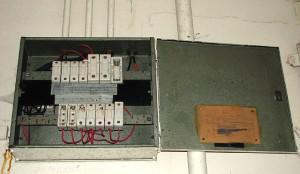 With per capita energy consumption rising across Japan, the resource-limited island will soon have to address some tough questions regarding its future energy policy. With unease over nuclear power, some are calling to expand electricity production via renewables and fossil fuels. However, others believe electricity-conservation efforts like the grassroots movement, Ampere Down, is a better way to address the country’s energy predicament.
With per capita energy consumption rising across Japan, the resource-limited island will soon have to address some tough questions regarding its future energy policy. With unease over nuclear power, some are calling to expand electricity production via renewables and fossil fuels. However, others believe electricity-conservation efforts like the grassroots movement, Ampere Down, is a better way to address the country’s energy predicament.
Going way beyond simply flicking the lights off or adjusting the thermostat, Ampere Down is geared towards hardline energy conservationists. The Wall Street Journal reports that the small but growing movement encourages Japanese citizens to trade in their standard 30- or 40-amp fuse boxes for one that is 20-amps or fewer. Think of it as a “hard” energy monitor. By installing a lower-capacity fuse box, participants of the movement must use less than 20 amps, or else they will lose all power. They’ll have to be careful not to blow a fuse the next time they use the vacuum cleaner (10 amps), toaster oven (10 amps), microwave (6 amps), or laptop (my Dell is rated at 4.6 amps).
The Ampere Down movement began in 2007, after The Sloth Club proposed the concept as a way to protest the growing energy-hungry lifestyle in Japan. Despite this trend, the country as a whole is still relatively efficient. The idea originally came from environmental activist and Canadian expat, Peter Howlett, who sees it as a possible way to reduce peak energy rates in Japan. Though a relatively drastic approach, Howlett said his family of five was blowing the fuse just once a month after a few months’ practice. The concept was most widely implemented in the months after the 2011 tsunami, as it helped cut energy consumption during the country’s energy shortages and blackouts.
As you can probably imagine, this concept might have to be scaled “up” for the U.S. Here, the most common fuse boxes are 100-amps, and some are even double that. Switching to a lower-amp fuse box is a free and effective way to cut your energy bill, but would you actually do it?

